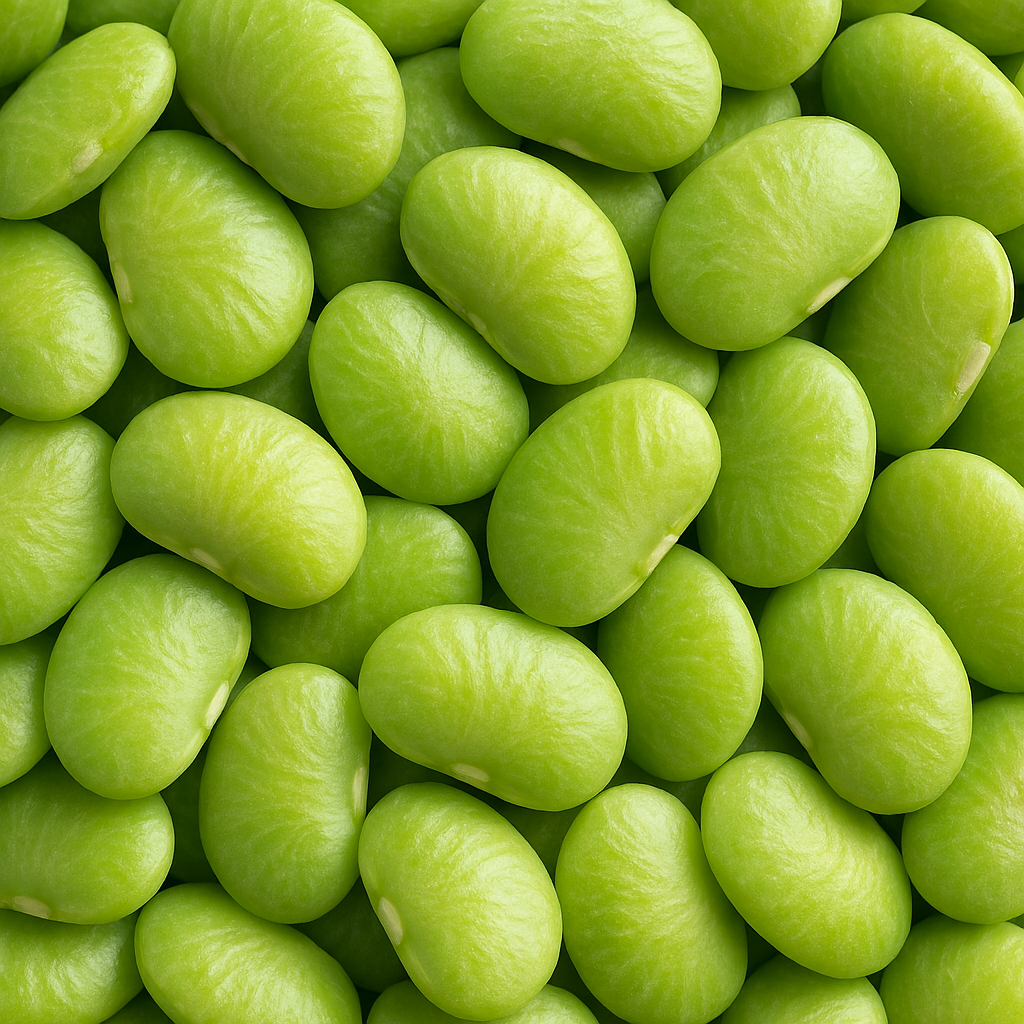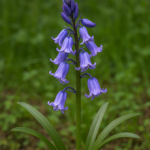
Facts about Lima Beans
The Lima Bean, scientifically known as Phaseolus lunatus, is far more than just a humble legume—it’s a crop with a rich and measurable legacy that spans thousands of years, multiple continents, and diverse cultures. First cultivated in Peru around 2000 BC and possibly harvested as early as 6000 BC, this crescent-shaped bean has played a vital role in ancient civilizations like the Moche, been traded across oceans during the colonial era, and continues to be a staple in kitchens and farms around the world. Named after the Peruvian capital yet pronounced differently in English, the lima bean has undergone two distinct domestication events, adapted to various climates, and grown to heights of up to 5 meters depending on its variety. It’s packed with nutritional value—offering 8 grams of protein, 7 grams of fiber, and less than 1 gram of fat per 100 grams—making it a heart-healthy, plant-based powerhouse. From its ceremonial use in pre-Columbian art to its inclusion in astronaut diets and iconic dishes like Southern succotash and Spanish paella, the lima bean’s story is filled with fascinating facts, historical milestones, and scientific data. In this blog, we’ll uncover 25 of the most interesting, verified, and quantifiable facts about the lima bean, revealing why this ancient crop remains relevant and remarkable in today’s world.
1. Ancient Cultivation
Lima beans were first cultivated in Peru around 2000 BC, making them one of the oldest known domesticated legumes in the Americas. Archaeological evidence from the Andes suggests that wild varieties of Phaseolus lunatus were being harvested as early as 6000 BC, indicating a long-standing relationship between indigenous peoples and this crop. Their early domestication highlights their importance in pre-Columbian agriculture, particularly in the development of sustainable food systems in mountainous regions.
2. Name Origin
The name “lima bean” is derived from Lima, the capital city of Peru, where the bean was first documented by European explorers. Interestingly, the English pronunciation “lime-uh” differs from the Spanish pronunciation “Lee-ma,” reflecting linguistic shifts during colonial expansion. This naming convention underscores the bean’s Peruvian heritage and its journey through global trade routes during the Age of Exploration.
3. Global Spread
Lima beans were introduced to Europe in the 16th century by Spanish explorers who brought them from South America. From Europe, they spread to Africa and Asia, becoming a globally cultivated crop due to their adaptability and nutritional value. Today, lima beans are grown in tropical and subtropical regions worldwide, with major production centers in India, Myanmar, Brazil, and the United States.
4. Moche Civilization
Between 100 and 800 AD, the Moche civilization of northern Peru incorporated lima beans into their ceremonial art and iconography. Moche pottery often depicted warriors and deities holding or surrounded by lima beans, symbolizing themes of fertility, warfare, and the cycle of life and death. These artistic representations suggest that lima beans held spiritual significance and were possibly used in ritual offerings or storytelling.
5. Colonial Export
During the Spanish Viceroyalty of Peru, established in 1542, lima beans became a valuable export commodity. Spanish ships carried them across the Atlantic to Europe and later to colonial territories in Africa and Asia. Their inclusion in colonial trade networks highlights their economic importance and the role they played in shaping global agricultural exchanges during the early modern period.
6. Scientific Name
The scientific name of the lima bean is Phaseolus lunatus, with “lunatus” meaning “half-moon” in Latin. This refers to the bean’s distinctive curved shape, which resembles a crescent moon. The genus Phaseolus includes other important legumes such as the common bean (Phaseolus vulgaris), and the classification reflects both morphological and genetic similarities among these species.
7. Domestication Events
Lima beans underwent two separate domestication events: one in the Andes around 2000 BC, producing large-seeded varieties, and another in Mesoamerica around 800 AD, resulting in small-seeded types known as Sieva beans. These independent domestications led to genetic divergence and regional adaptations, with the Andean types thriving in cooler, high-altitude climates and the Mesoamerican types suited to warmer lowlands. This dual origin is a rare phenomenon in crop evolution and contributes to the bean’s genetic diversity.
8. Plant Height
Depending on the variety and growing conditions, lima bean plants can reach heights of 1 to 5 meters. Bush varieties typically grow to about 1 meter, while pole varieties can climb trellises and supports up to 5 meters tall. This growth flexibility allows farmers to choose cultivars based on space availability and harvesting preferences.
9. Seed Size
Mature lima bean seeds range from 1 to 3 centimeters in length, with larger seeds typically found in Andean varieties. These size differences are not just cosmetic—they influence cooking time, texture, and market value. Larger beans are often preferred for culinary uses like stews and casseroles, while smaller beans are favored for quick-cooking dishes.
10. Soil pH Preference
Lima beans thrive in soils with a pH range of 6.0 to 6.8, which is slightly acidic to neutral. This pH range supports optimal nutrient uptake, particularly for nitrogen, phosphorus, and potassium. Farmers often test and amend soil to maintain this balance, ensuring healthy root development and high yields.
11. Planting Depth
For successful germination, lima bean seeds should be planted at a depth of 1 to 1.5 inches (2.5 to 3.8 cm). Planting too shallow can expose seeds to drying out, while planting too deep may hinder sprouting. This precise depth ensures that the seed remains moist and protected while allowing the emerging shoot to reach the surface efficiently.
12. Spacing Requirement
Lima bean plants should be spaced 4 to 6 inches (10 to 15 cm) apart to allow for adequate airflow and sunlight penetration. Proper spacing reduces the risk of fungal diseases and promotes robust growth. In commercial farming, this spacing also facilitates mechanical harvesting and irrigation efficiency.
13. Germination Time
In warm soil conditions of around 77°F (25°C), lima beans typically germinate within 7 to 10 days. Cooler temperatures can delay germination to as long as 18 days, affecting planting schedules and crop rotation plans. Farmers often use soil thermometers to ensure optimal conditions before sowing.
14. Protein Content
Lima beans are a rich source of plant-based protein, offering approximately 8 grams of protein per 100 grams of cooked beans. This makes them an excellent dietary choice for vegetarians and vegans, contributing to muscle repair and immune function. Their protein content rivals that of other legumes like lentils and chickpeas.
15. Fiber Content
Each 100-gram serving of lima beans contains about 7 grams of dietary fiber, which supports digestive health and helps regulate blood sugar levels. High-fiber diets are associated with reduced risks of heart disease, obesity, and type 2 diabetes. Lima beans are particularly valued for their soluble fiber, which aids in cholesterol management.
16. Low Fat
Lima beans are naturally low in fat, with less than 1 gram of fat per 100 grams, making them ideal for heart-healthy diets. Most of the fat present is unsaturated, contributing to cardiovascular wellness. Their low-fat profile also makes them suitable for calorie-controlled meal plans.
17. Vitamin Rich
Lima beans are packed with essential vitamins, including vitamin B6, folate, and vitamin C. Vitamin B6 supports brain function and metabolism, folate is crucial for DNA synthesis and pregnancy health, and vitamin C boosts immunity and skin health. These nutrients make lima beans a well-rounded addition to any diet.
18. Mineral Content
In addition to vitamins, lima beans are rich in minerals such as iron, magnesium, potassium, calcium, and phosphorus. Iron aids in oxygen transport, magnesium supports nerve function, and potassium regulates blood pressure. These minerals contribute to bone strength, energy production, and overall metabolic health.
19. Southern U.S. Cuisine
In the Southern United States, lima beans are a staple ingredient in traditional dishes like succotash, which combines beans with corn and sometimes okra. They are also used in hearty stews and casseroles, often flavored with smoked meats. Their popularity in Southern cooking reflects both historical cultivation and cultural adaptation.
20. Indian Cuisine
In India, lima beans are incorporated into vegetable curries, stir-fries, and rice dishes, especially in southern regions like Tamil Nadu and Kerala. Known locally as “double beans,” they are prized for their creamy texture and ability to absorb spices. Their use in Indian cuisine showcases their versatility and global appeal.
21. Spanish Paella
In Spain, lima beans—specifically the garrofón variety—are a key ingredient in Valencian paella, a traditional rice dish. These large, flat beans add texture and flavor to the saffron-infused rice and seafood mixture. The inclusion of garrofón in paella is a point of regional pride and culinary heritage.
22. Space Missions
Due to their high nutritional value and long shelf life, lima beans have been included in astronaut diets during space missions. NASA has studied legumes like lima beans for use in space agriculture systems, where they could be grown in controlled environments. Their protein, fiber, and mineral content make them ideal candidates for sustaining human health in space.
23. Color Variants
While green is the most common color, lima beans also come in white, red, and purple varieties, depending on the cultivar. These color differences are often linked to genetic traits and regional breeding practices. Colored beans may also contain higher levels of antioxidants, contributing to their nutritional diversity.
24. Symbol of Fertility
In various cultures, lima beans are considered a symbol of fertility and prosperity, often used in rituals and ceremonies. In some Andean traditions, beans were buried with the dead or offered to deities to ensure agricultural success. Their association with life cycles and abundance reflects their deep cultural roots.
25. Artistic Legacy
Ancient Peruvian pottery frequently depicted lima beans, showcasing their cultural and spiritual importance. These ceramic pieces often featured stylized beans alongside human and animal figures, suggesting symbolic meanings beyond nutrition. Museums around the world display Moche artifacts that highlight the lima bean’s role in pre-Columbian art and society.
Frequently Asked Questions about Lima Beans:
1. Are Lima Beans and Butter Beans the Same Thing?
Yes, lima beans and butter beans are the same species: Phaseolus lunatus. The term “butter bean” is commonly used in the southern United States and the United Kingdom, while “lima bean” is more widely used elsewhere. Both names refer to the same flat, crescent-shaped legume, although different varieties (like Fordhook and baby lima) may vary in size and texture.
2. What Are the Main Types of Lima Beans?
There are two primary types: baby lima beans and Fordhook lima beans. Baby limas are smaller, more tender, and often used in frozen or canned form. Fordhook limas are larger, starchier, and preferred for fresh or dried cooking applications due to their rich, creamy texture.
3. Why Are My Lima Beans Bitter?
Bitterness in lima beans is usually caused by cyanogenic glycosides, natural compounds that release cyanide when broken down. This is more common in wild or small-seeded varieties. To reduce bitterness, soak the beans for at least 8 hours, discard the soaking water, and cook thoroughly.
4. Are Lima Beans Safe to Eat Raw?
No, raw lima beans can be toxic due to the presence of cyanogenic glycosides. Cooking destroys these compounds, making the beans safe to eat. Always soak and cook lima beans properly before consumption.
5. What Is the Nutritional Value of Lima Beans?
A 100-gram serving of cooked lima beans contains approximately:
- Protein: 7.8 g
- Fiber: 7 g
- Potassium: 508 mg
- Magnesium: 43 mg
- Iron: 2.3 mg
- Calories: 209 kcal (per 1 cup or 170 g)
They are also rich in vitamin B6, folate, thiamin, and vitamin C, making them a nutrient-dense food.
6. How Do I Cook Lima Beans?
Lima beans can be cooked fresh, frozen, canned, or dried. Fresh beans take about 30 minutes to cook, while dried beans should be soaked overnight and boiled for 60–90 minutes. Canned and frozen beans are pre-cooked and only need reheating.
7. What Is the Best Fertilizer for Lima Beans?
Lima beans benefit from a balanced fertilizer with low nitrogen and higher phosphorus and potassium levels. Over-fertilizing with nitrogen can lead to lush foliage but poor pod production. Organic compost and lime (if soil is acidic) can also improve growth.
8. Can Lima Beans Be Grown in Containers?
Yes, lima beans can be grown in containers, especially bush varieties. Use a container at least 12 inches deep, with well-draining soil and full sun exposure. Regular watering and support for climbing types are essential.
9. What Is the Ideal Climate for Growing Lima Beans?
Lima beans thrive in warm climates with temperatures between 70°F and 85°F (21°C to 29°C). They require at least 2 months of warm soil to mature and are sensitive to frost. In cooler regions, they should be planted after the last frost date.
10. Why Are My Lima Bean Plants Flowering But Not Producing Pods?
This issue may be due to poor pollination, excess nitrogen, or environmental stress like heat or drought. Ensure proper spacing, avoid over-fertilizing, and encourage pollinators. Shade and airflow can also help reduce stress.
11. Can Lima Beans Help Stabilize Blood Sugar?
Yes, lima beans have a low glycemic index and are high in soluble fiber, which slows sugar absorption. Studies show that regular consumption of legumes like lima beans can reduce fasting blood glucose and lower the risk of type 2 diabetes.
12. Are Lima Beans Good for Heart Health?
Absolutely. Lima beans contain 9 grams of fiber per cup, which helps lower cholesterol and reduce inflammation. Their high potassium content also supports healthy blood pressure, making them a heart-friendly food.
13. Can Lima Beans Aid in Weight Loss?
Yes, the combination of protein and fiber in lima beans promotes satiety, reducing the urge to snack. This can help control calorie intake and support weight management. They are also low in fat and calories.
14. What Is the Difference Between Fresh, Frozen, and Dried Lima Beans?
- Fresh: Tender, seasonal, and quick to cook (30 minutes).
- Frozen: Convenient, often labeled as baby or Fordhook.
- Dried: Long shelf life, requires soaking and longer cooking time.
Each form has unique culinary uses and nutritional benefits.
15. How Long Do Lima Beans Last in Storage?
- Dried beans: Up to 1 year in a cool, dry place.
- Frozen beans: Up to 8 months in the freezer.
- Canned beans: Up to 2 years, unopened.
Proper storage prevents spoilage and nutrient loss.
16. Can Lima Beans Be Used in Science Projects?
Yes, lima beans are commonly used in plant growth experiments, including studies on vitamin effects, germination, and soil conditions. They are easy to grow and respond well to controlled variables.
17. What Is “Fordhook” in Lima Beans?
“Fordhook” refers to a large-seeded variety of lima beans developed and popularized by Burpee Seeds in the early 20th century. Known for its creamy texture and flavor, Fordhook is widely grown for fresh and frozen use.
18. Are Lima Beans Genetically Modified (GMO)?
As of now, commercial lima beans are not genetically modified. Most varieties are heirloom or hybrid types developed through traditional breeding methods.
19. What Are the Culinary Uses of Lima Beans?
Lima beans are used in succotash, stews, curries, paella, and salads. Their creamy texture makes them ideal for purees and spreads. They pair well with corn, tomatoes, herbs, and spices.
20. Are Lima Beans Suitable for Vegan Diets?
Yes, lima beans are an excellent source of plant-based protein, fiber, and essential nutrients, making them ideal for vegan and vegetarian diets. They can replace meat in many recipes.








